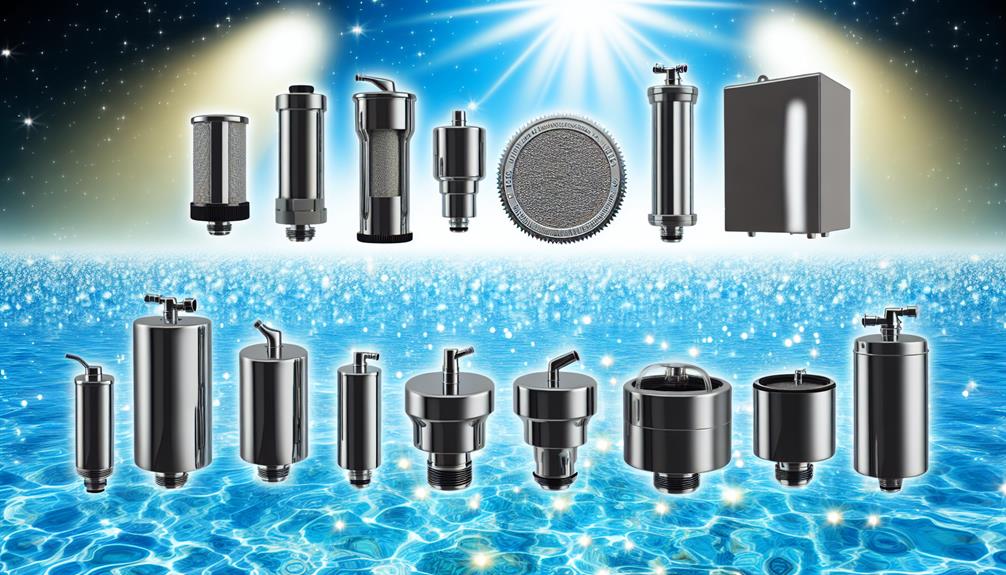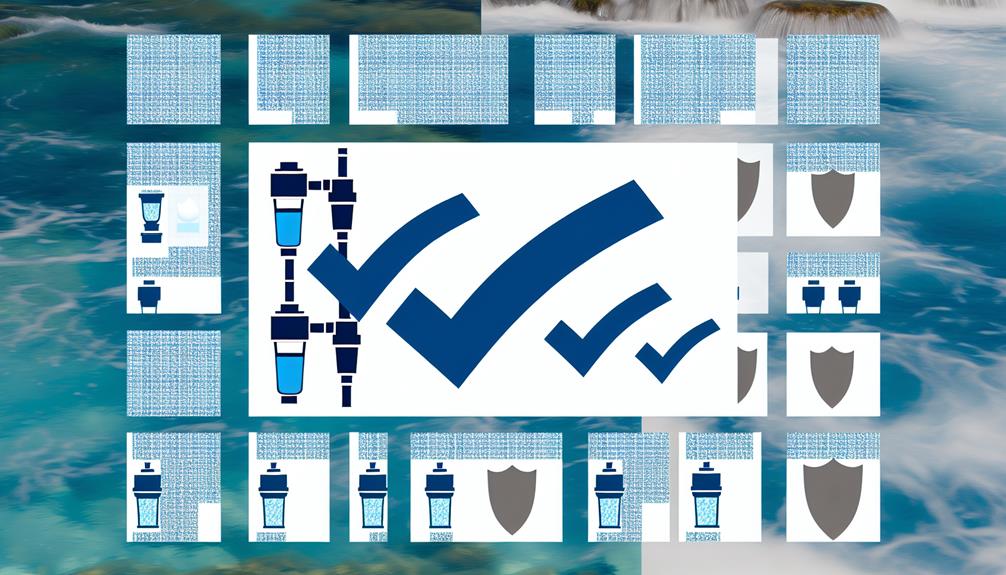You might not be aware that OSHA's standards for workplace water filter compliance not only cover the accessibility and quality of drinking water but also extend to the intricacies of filtration systems and maintenance protocols.
As an employer, you're tasked with ensuring that every sip of water your employees take meets rigorous safety standards, a responsibility that's as vital as it is often overlooked. While the provision of potable water is a basic necessity, the path to achieving and maintaining compliance involves navigating a complex set of regulations that can be as murky as untreated water.
You're left to wonder, how exactly do these standards translate into daily operations, and what could be the consequences of falling short? To safeguard your team's health and your company's reputation, it's crucial to grasp the full scope of these regulations and the steps required to uphold them.
Understanding OSHA Regulations
Ensuring your workplace's compliance with OSHA regulations means providing not only potable water that meets health standards but also maintaining clear distinctions and sanitary conditions for non-potable water sources. As an employer, you're responsible for adhering to the stringent standards set forth by OSHA, which include imperative requirements for the provision of drinking water.
According to OSHA Drinking Water Requirements, you must provide potable drinking water in sufficient amounts throughout the working hours to meet the needs of your employees. This means that potable water dispensers, such as a drinking fountain, must be conveniently accessible and can't be sources of contamination. The water must be fresh, pure, suitably cool, and provided without any restrictions or cost to the employees.
In addition, any outlets delivering non-potable water must be clearly marked, indicating that the water isn't safe for drinking, washing, or cooking. This is to prevent any confusion and to protect the health of your workforce. You'll ensure that these non-potable water sources are kept in a clean and sanitary condition to avoid any potential health hazards.
Water Quality Standards
As an employer, you must adhere to water quality standards that mandate the provision of potable water and clearly distinguish non-potable sources to safeguard employee health. Your responsibility extends to ensuring that any provided primary drinking water meets the standards set forth to protect public health. This includes using a water filter system if necessary to guarantee that the water supply at every water cooler and in all drinking areas is safe and clean for consumption.
Potable water, appropriate for drinking and personal needs, must be accessible through a fountain, covered container with single-use cups, or pre-packaged single-use bottles. You're obliged to prevent any cross-connection with non-potable water systems, which could contaminate the drinking water. Non-potable water, while useful for tasks like firefighting or cleaning outdoor areas, mustn't contain hazardous substances and must be prominently labeled as unsafe for drinking or personal use.
Moreover, the OSHA standard requires you to provide separate sanitation facilities, ensuring privacy and adequate space based on the gender distribution and quantity of your workforce. These must be complemented by handwashing facilities with suitable running water temperatures, soap, and single-use drying methods to maintain optimal hygiene.
Filter Maintenance Requirements
To maintain compliance with OSHA standards, you're required to schedule and execute regular cleaning and servicing of your workplace water filters, ensuring their continued efficacy and sanitation. As per the Occupational Safety and Health Administration (OSHA) regulations, it's imperative that you, as an employer, provide potable drinking water through well-maintained water dispensers and sanitation facilities.
Your responsibilities include adhering to water quality standards, which are directly impacted by the state of the water filters. Filter maintenance requirements aren't just about functionality but also about preventing contamination that could compromise employee health. The employer shall ensure that any maintenance of the water filtration systems is performed in accordance with OSHA guidelines, which are designed to safeguard against health risks.
In addition to conducting regular maintenance, you must also implement stringent documentation practices. Detailed records of your filter maintenance activities are crucial in demonstrating your compliance with OSHA requirements. This record-keeping should include dates, actions taken, and the personnel involved in the maintenance work.
Compliance and Inspection Protocols
Regularly conducting inspections is crucial for employers to maintain compliance with OSHA standards and guarantee that sanitation facilities remain clean, sanitary, and functional. Under the Occupational Safety and Health Act, you, as an employer, shall provide adequate facilities and ensure the availability of potable drinking water. This isn't only a requirement but also a fundamental aspect of maintaining a healthy workforce.
Your compliance and inspection protocols must include verifying that water sources are uncontaminated, and that filters in the workplace water systems are functioning correctly to provide potable water. It's imperative to label non-potable water outlets clearly to prevent any misuse. Furthermore, handwashing facilities must offer hot and cold running water alongside soap, allowing for proper hygiene practices.
You must also ensure that employees working in high-temperature conditions have access to water breaks to mitigate the risk of heat-related illnesses. In instances of water supply disruptions, you're obliged to provide alternative sources of safe drinking water. This proactive approach not only adheres to workplace water filter compliance but also safeguards the well-being of your employees.
Training and Information Dissemination
Ensuring that every employee has a comprehensive understanding of the use and maintenance of sanitation facilities is a key responsibility for employers to foster a safe and compliant workplace. Under the Occupational Safety and Health Administration (OSHA), part of the Safety and Health Act, you, as an employer, must provide adequate training and ensure the dissemination of critical information regarding potable drinking water and sanitation facilities.
To comply with these OSHA standards, consider the following key points:
- Maintenance Training: Educate employees on the proper maintenance and cleaning schedules for water filters and sanitation facilities to prevent contamination.
- Hazard Awareness: Inform employees about the dangers of non-potable water and the locations of such water sources to avoid misuse.
- Hand Hygiene Instruction: Emphasize the significance of thorough handwashing using soap and water and proper drying techniques, especially when handling hazardous materials.
- Potable Water Use: Disseminate information on the correct use of potable drinking water, including the ban on shared drinking vessels and the labeling requirements for non-potable water outlets.

